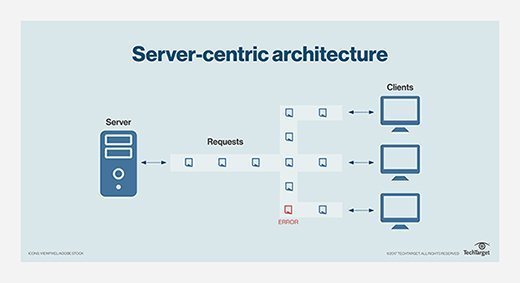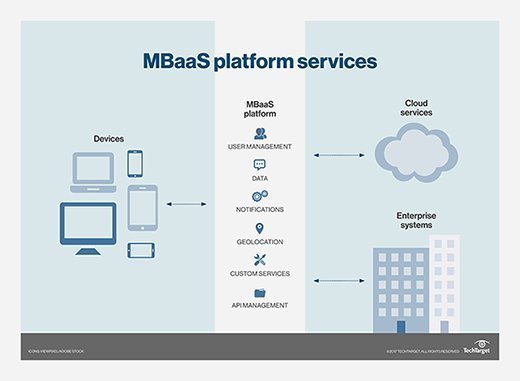
Fotolia
Mobile app architecture is nothing without MBaaS
Many companies today are turning to MBaaS platforms that take the pain out of mobile app architecture by enabling microservices and making API management the center of the system.
Mobile apps are now integral to the functioning of any enterprise. The way these mobile apps are built and managed is critical to the smooth functioning of the enterprise and its success in the market. Yet, a mobile app architecture calls for a radically different way of developing and managing applications.
Traditionally, enterprises were used to server-centric architecture for developing applications. This is a simple client-server model, where everything is centralized and easy to control and manage. Requests pass from the client to the server and back in a rather simple flow, and any errors or lagging performance can be identified and resolved quickly.
Even if many servers are added to the mix, it still remains the same server-based architecture that is hard to scale and expensive. Hardware-centric architecture and all its variants do not work for enterprise mobile applications. The sheer number of devices and users will throttle the network and crash the servers. Modern development tools and data analytics tools require robust infrastructure that's not just cloud-based, but cloud-native.

MBaaS simplifies the back end
When working with a mobile app architecture, building the front-end experience is an exciting phase. But working with the back-end system that powers enterprise mobile apps is a nightmare. There are too many proprietary systems to integrate, high volumes of data with lots of variation and APIs that are built and managed in silos. Add to this the various mobile platforms and devices you need to factor in when building an app, and it's chaos.
Today, mobile backend as a service (MBaaS) has emerged as the best alternative to traditional mobile app development. It manages the back end of mobile apps and gives mobile developers the freedom to focus on what they really enjoy -- designing outstanding user experiences and creating powerful enterprise apps with little effort.

MBaaS platforms provide a range of services that are used to develop mobile apps. Here are some of the services and their functions:
- User management: controls user access to the mobile app;
- Data: manages the storage of persistent data;
- Notifications: provides a push notification service to enable developers to communicate with users;
- Geolocation: enables apps to leverage the GPS capabilities of mobile devices;
- Custom services: built by the developer to extend the MBaaS platform and integrate it with other enterprise systems; and
- API management: creates and manages all APIs that facilitate interaction between the front end and back end.
Microservices by design
Each of the services of an MBaaS platform isn't tied to a single server, or even a couple of hardware servers. In fact, each service functions as a collection of interdependent microservices. This is the key component of a modern mobile app architecture.
These microservices are made available externally via APIs, the language of the internet. Every interaction we have with an application is an API call. MBaaS gives APIs their rightful spot in the center of the mobile app architecture. The APIs are created automatically by the MBaaS platform after a new service is created. You can manage the APIs from within the MBaaS platform, providing a centralized way to manage a decentralized system.
MBaaS takes the focus from the mobile devices and hardware servers and puts it where it rightly should be -- on the back-end software and data layer. MBaaS enables enterprises to build powerful back-end systems, irrespective of how many devices or servers are involved in the system.
With the rising demand for mobile app developers and the lack of available talent, it's important to build systems with reusable components. That's only possible with MBaaS, which lets you reuse microservices across various apps and cuts down the time required to build a new app. Additionally, because MBaaS can work cross-functionally with multiple mobile OSes, you can build once and run everywhere. This is not just convenience, but a crucial strategic advantage over the competition.
Build or buy mobile infrastructure?
The big question then is: Can you build these microservices and set up the APIs by yourself? The answer is yes, but it takes more effort and time. You'll need to provision hardware infrastructure to support the system, configure each of the services to act as repeatable building blocks when creating mobile apps, create the APIs and integrate the various parts of the system so they work well together -- all of which would distract you from what you really want to do: build and ship high-quality mobile apps.
Mobile has changed the application architecture of enterprise apps. The traditional single-server setup can't be ported over to a mobile world. You need to leverage modern microservices architecture, which is powered by APIs. MBaaS platforms take the pain out of back-end management by enabling microservices by default and making API management the center of the system. As you look to bring more innovative apps to market faster, MBaaS is a key advantage.







